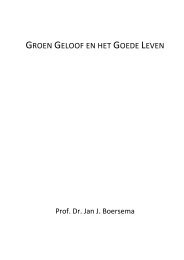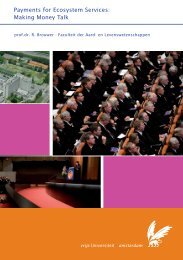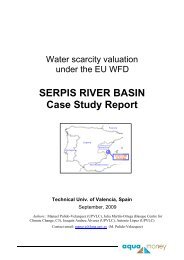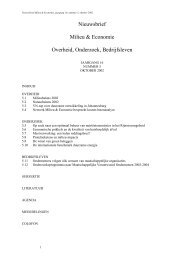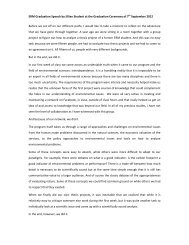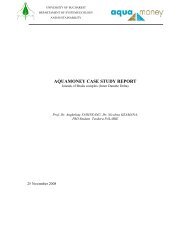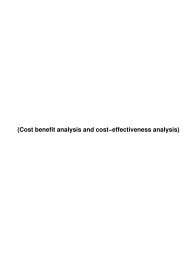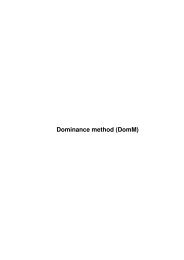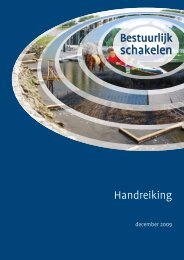Case study report Po Italy - VU University, Institute for Environmental ...
Case study report Po Italy - VU University, Institute for Environmental ...
Case study report Po Italy - VU University, Institute for Environmental ...
You also want an ePaper? Increase the reach of your titles
YUMPU automatically turns print PDFs into web optimized ePapers that Google loves.
AquaMoney<br />
9.6 Administer the Valuation Instrument/Collection of the Data<br />
The survey took on average 20 minutes and this amount of time represents a large disadvantages because people in<br />
street do not have time. In the future, a more focused questionnaire <strong>for</strong> a specific problem could avoid general<br />
questions. A problem is anyway the definition of the problem and attributes which is too long <strong>for</strong> telephone and street<br />
interviews, unless a more focused problem is considered and respondents know it.<br />
Concerning the effect of the timing of the survey, it was implemented in the first half of September, after holiday season<br />
(August); most of the interviews were made by street interviews and were casual and driven by places were respondents<br />
could be available to answer; weather was reasonably good <strong>for</strong> most of the survey and the year was not mentioned as a<br />
particularly dry and hot one in the area (though water scarcity problems happen). We actually delayed the survey also to<br />
avoid rain (in June) and holiday time (in July-August)<br />
The practical way of administering the questionnaire may affect the ability to intercept the population relevant <strong>for</strong> the<br />
issue addressed; this may be more easily done when the <strong>study</strong> is more focused than the object of evaluation considered<br />
here.<br />
9.7 Prepare Data<br />
-<br />
9.8 Analyse and Interpret the Data<br />
We used Limdep <strong>for</strong> the CE. Comparison between areas was mostly made through comparison of descriptive statistics,<br />
rather than <strong>for</strong>mal methods.<br />
9.9 Reporting<br />
The actual in<strong>for</strong>mation content of the results should be evaluated more critically with respect to the actual decisionmaking<br />
problems: what is the perceived object being estimated? To what extent we can trust monetary values or should<br />
relax our interpretation to a “voting procedure”? Perceptions and open answers should have a higher place.<br />
Context questions are more often to be ready to arise when the work is discussed with the public. In the case of our<br />
design, typical issues raised during discussions occurred till the preparation of the <strong>report</strong> are:<br />
• IT1: Why did you not include in-house domestic uses? What if the expectations of respondents are wrong?<br />
How do you justify the low attention/importance of water issues? What was the amount paid by the<br />
respondents through water bill? Did you make sure that the perception of water bill is correct? How was the<br />
weather like when you carried out the survey? Why should families pay <strong>for</strong> the environment? Why should the<br />
water bill be the correct payment <strong>for</strong>m? How much is the ratio between costs attribute and water bill?<br />
• IT2: why should families be willing to pay <strong>for</strong> production sectors? How much water is used by household on<br />
the total? How relevant is a change in water in the environment by 3-6%. (questions actually raised during<br />
internal presentations)<br />
In the Italian case <strong>study</strong>, results will be discussed with the <strong>Po</strong> Basin authority and with the regional administration. An<br />
open event will be jointly organised. In fact the project was carried out since the beginning in strong coordination with<br />
<strong>Po</strong> Basin authority and with the Regional administration, including discussion of in<strong>for</strong>mation need and survey design.<br />
In drafting the <strong>report</strong>s attention should be focused on how the kind of results obtained fit into the next <strong>report</strong>ing<br />
requirements of the decision makers. It is necessary to have in mind here the differences between <strong>report</strong>ing a <strong>study</strong><br />
driven by research funding and a <strong>study</strong> driven by decision-makers funding <strong>for</strong> practical decision making.<br />
In real life situation it might be expected that the diffusion of the results will go through different levels of <strong>report</strong>ing and<br />
technicality. This may also imply that results of an evaluation <strong>study</strong> could also be part of wider planning, evaluation of<br />
participation documents mediated by the decision-making authority. In this case, attention should be paid to the<br />
consistency between different pieces of in<strong>for</strong>mation and to avoid misuse/misunderstanding of the evaluation exercise.<br />
References<br />
ARPA Emilia-Romagna, 2005. Valsat, valutazione della sostenibilità ambientale e territoriale. All’interno del piano di<br />
tutela e uso delle acque. (VER)<br />
32





